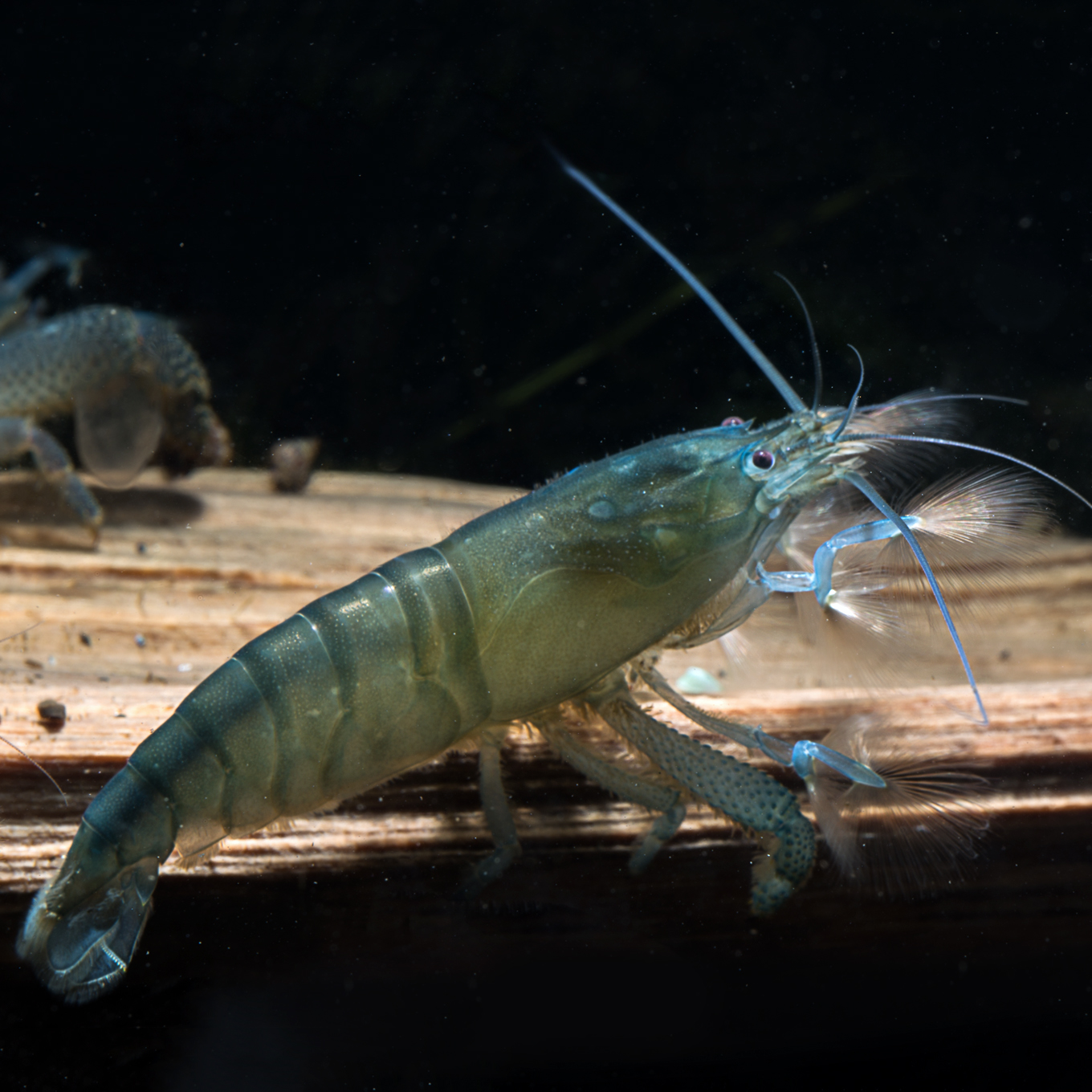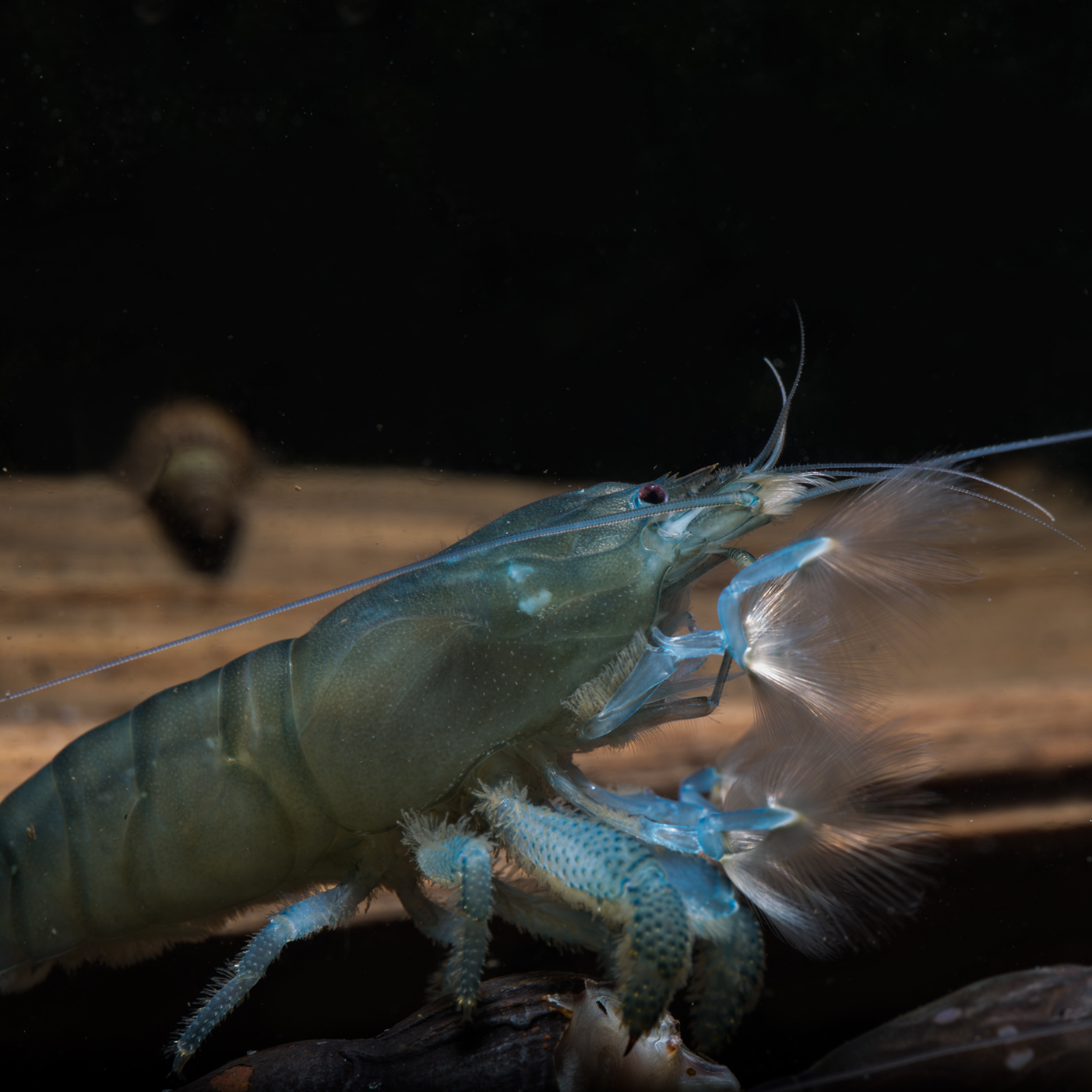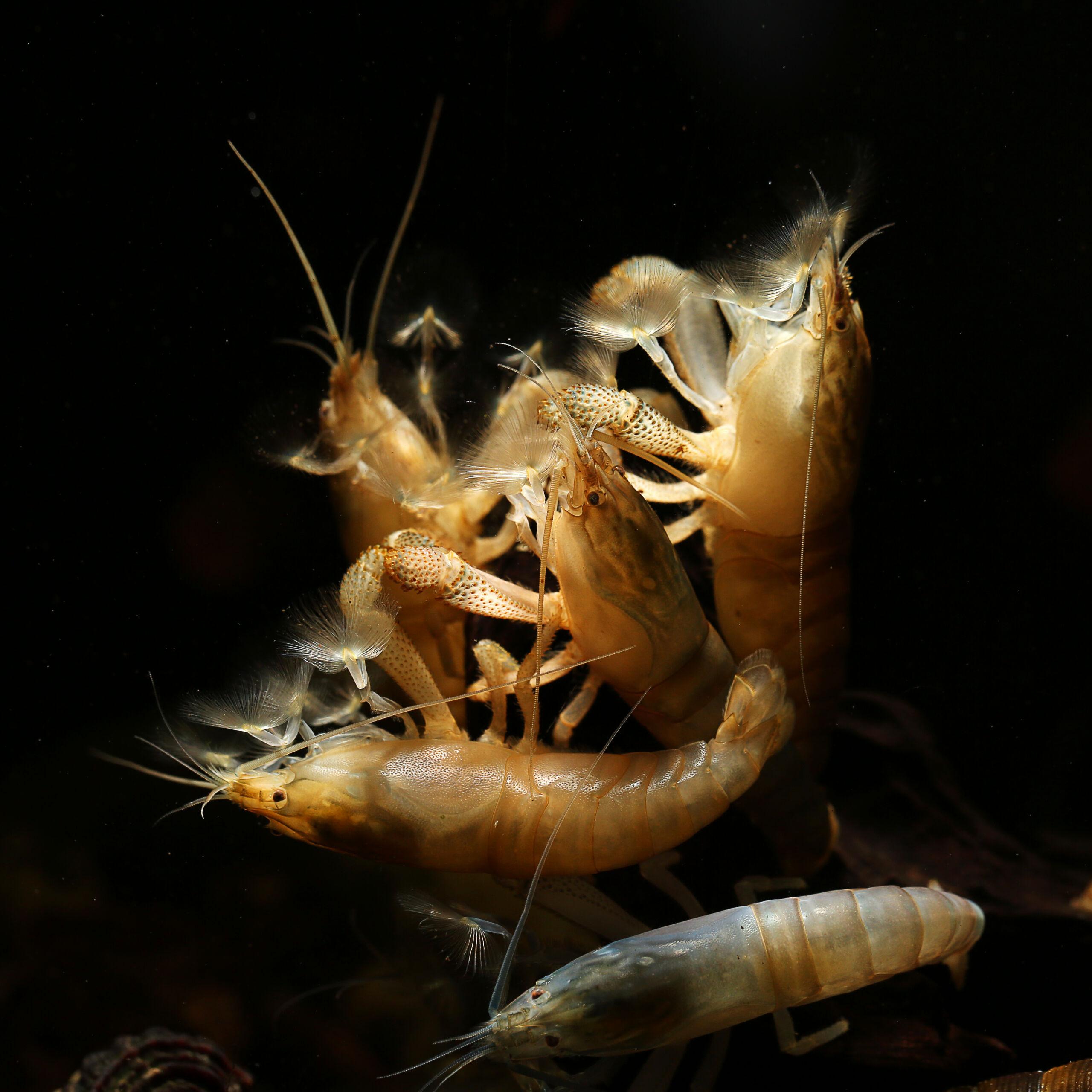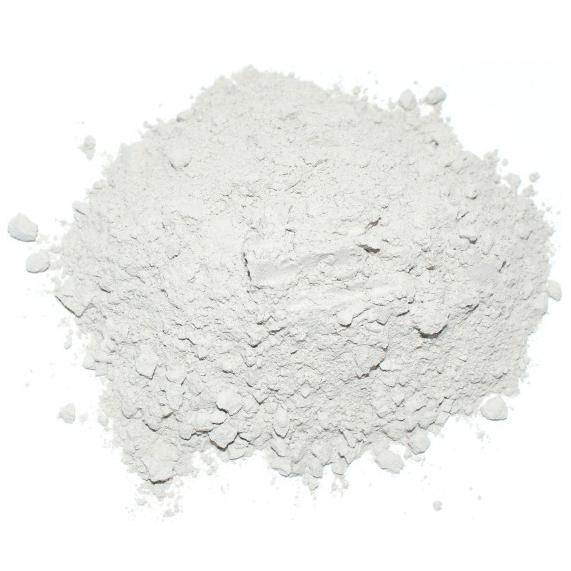Vampire Shrimp
Atya gabonensis
With a body length of up to 14cm, the Vampire Shrimp is an impressive sight.
- filtering type of shrimp
- brownish to blue in color
- no reproduction in fresh water
Out of stock
Receive in-stock notifications for this.
 Delivery in a few working days
Delivery in a few working days
 Free shipping from €60 across Austria
Free shipping from €60 across Austria





Important data
Product description & details
Atya gabonensis, also known as the Vampire Shrimp or Giant Fan Shrimp, occurs on both sides of the Atlantic and therefore on both the West African and the east coast of South America. Its distribution area extends from Senegal to the Congo and from Venezuela to Brazil. Its natural habitat is rocky, stony streams. With a considerable size of up to 14cm, the Giant Fan Shrimp really lives up to its name. The body color of this fan shrimp can range from white, light brown, reddish brown to a strong blue and adapts to the environment. Placed on a dark substrate, it develops increasingly darker and stronger colors with each molt.
Care in the aquarium
Due to its size, the Vampire Shrimp requires an aquarium with at least 80cm edge length or 112 liters capacity. Since it is a group animal, at least 3, preferably 5 or more, animals should be cared for together. Above all, the aquarium must have good current or at least zones with good flow in order to enable it to consume food. In our tank, the animals sit together in the current all day and filter for food particles in the water. The water can be soft to hard and should have a temperature between 22 and 28°C. Despite its size, the Vampire Shrimp is an absolutely peaceful species of shrimp, which can also be easily associated with much smaller species of fish and invertebrates, as long as they are also peaceful and feel comfortable under the same conditions.
Feeding
Like all fan shrimps, the Vampire Shrimp is a filter feeder. With its long fan-like bristles on the first two pairs of walking legs, it filters food particles from the water in the current and guides them to its mouthparts. There should be some mulch in the aquarium and supplementary feeding with suitable dust food. Spirulina and chlorella powder, powdered foods for shrimps and of course special foods for fan shrimp such as Shrimp King Atyopsis from Dennerle are well suited.
Sexual characteristics and breeding
Sex determination is usually only possible in sexually mature animals. Juveniles and males have a narrower underside of the abdomen, while sexually mature females have a wider underside that covers the swimming legs like a “skirt”. This widening of the abdomen serves to protect the eggs, which the female carries and cares for between her swimming legs until they hatch. Female Vampire Shrimp also have smaller claws than males and are significantly larger than them. Atya gabonensis belongs to the primitive reproductive type and requires salt water to reproduce. In contrast to shrimp of the specialized reproductive type, the females of the Vampire Shrimp do not release finished shrimplets, but rather several hundred larvae, which in nature are washed into salt water and go through several larval stages until they develop into finished shrimp and return to fresh water. Breeding is possible, but requires patience and precision in order to create the right living conditions for the young larvae.










